Foundation Crack Repair
With Epoxy Injection
The repairing of structural deficiencies and/or seepage and water leakage as a result of foundation wall cracks is a critical aspect of the basement waterproofing and pre-finishing process. Today, the most efficient and economical way to repair poured foundation wall cracks is with low-pressure injection. There are a variety of urethane foam and epoxy resin injection products for the repair of concrete wall cracks. When waterproofing basements, it is an absolute priority to ensure that all concrete wall cracks are properly repaired and sealed, stopping further basement seepage and wall leaks.
- Improves structural integrity of the wall.
- Stops seepage though walls.
- Can bring integrity back to original levels.
FOUNDATION CRACK REPAIR QUOTE
Request More information
Submit a few photos of your foundation and our experts with get back to you with recommendations.
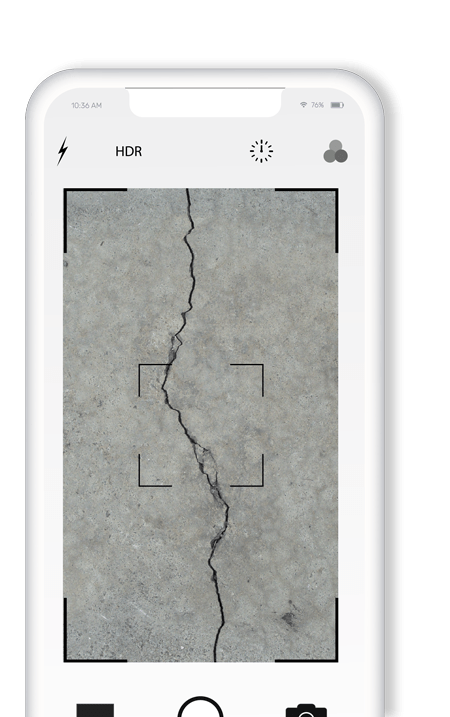
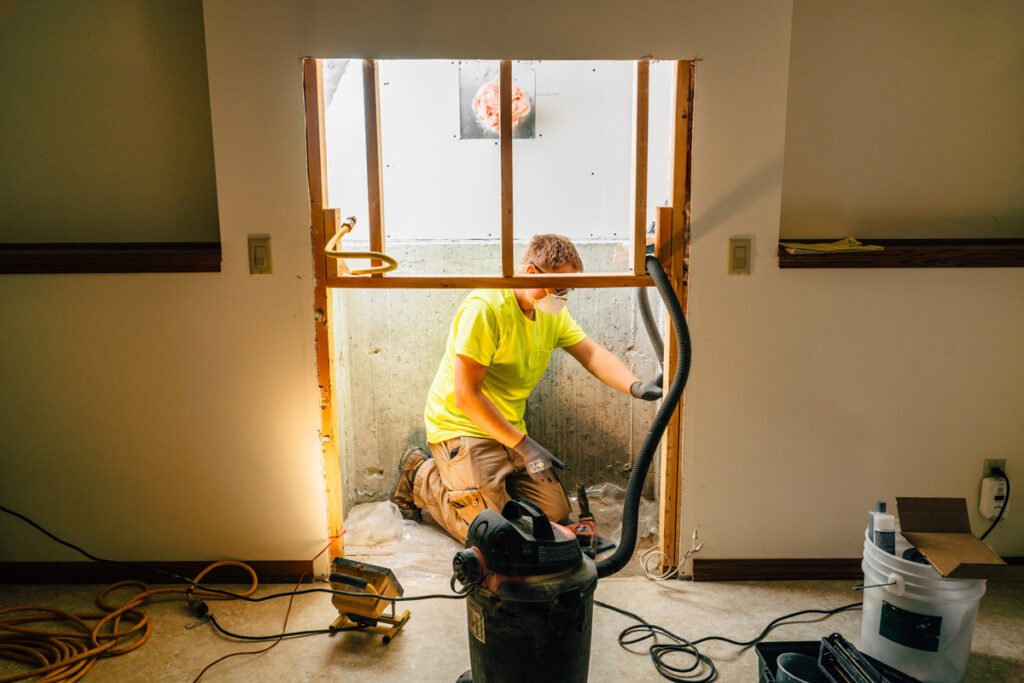

STEP 1
PREPARATION
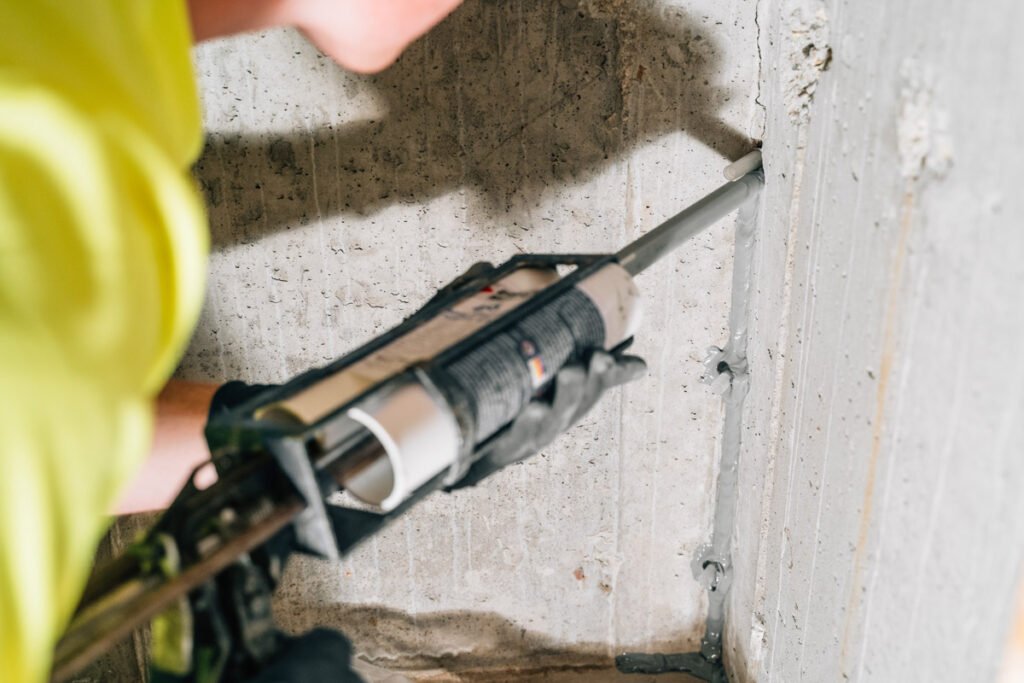
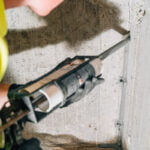
STEP 2
PORT INSTALLATION
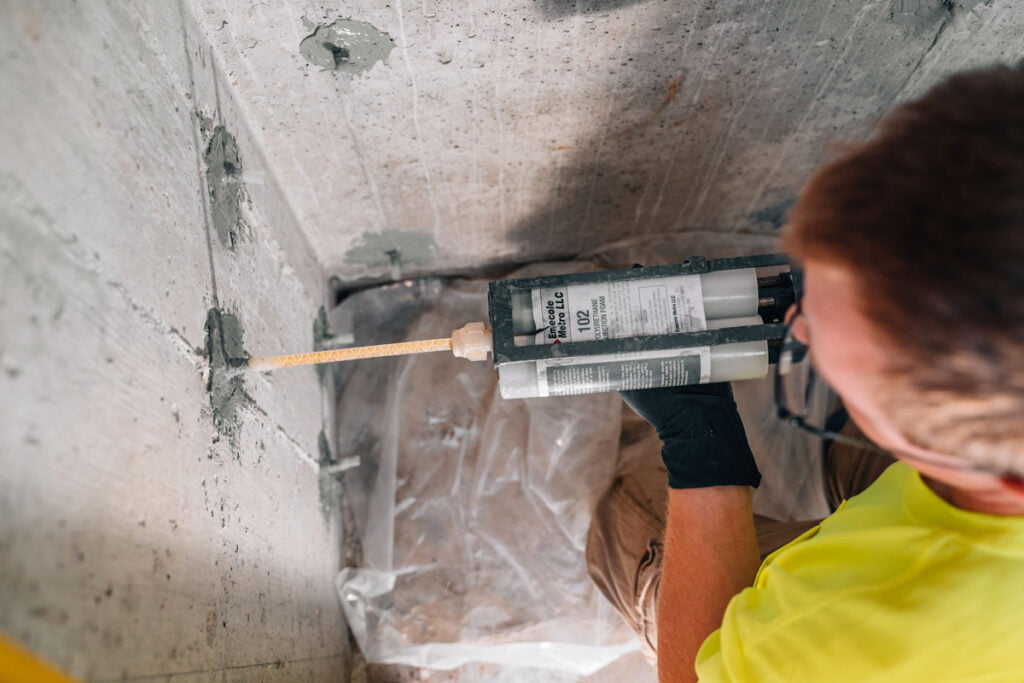
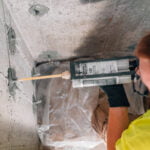
STEP 3
INJECTION
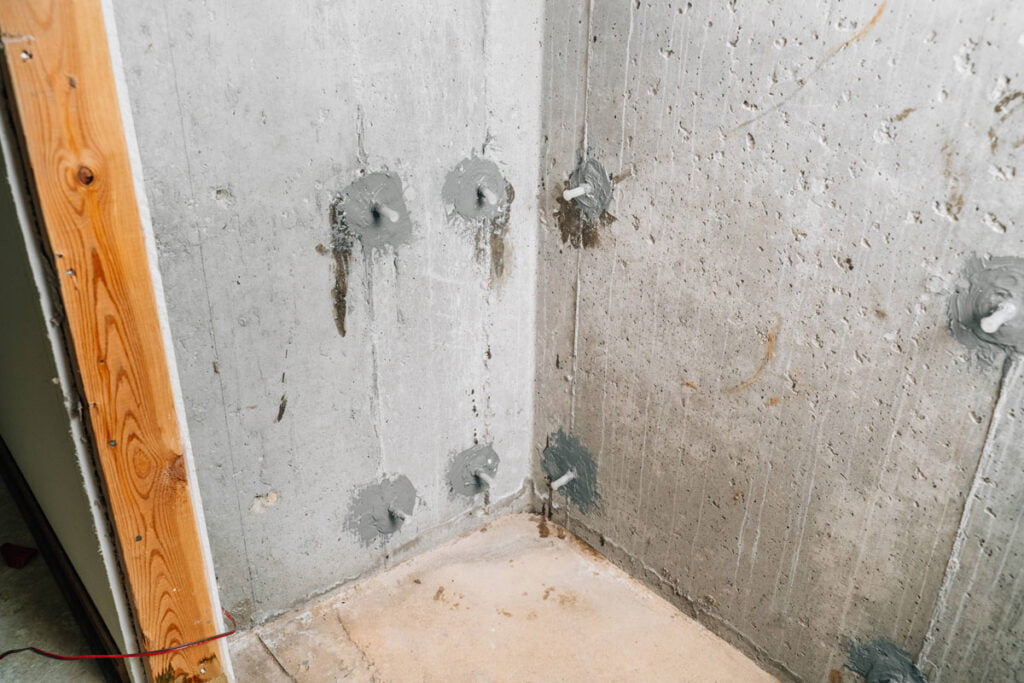
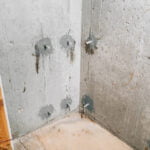
STEP 4
SETTING
EPOXY INJECTION INSTALLATION
See The Steps of Epoxy Injection
Epoxy injection is typically done in 4 steps.
Epoxy Injection
Project Portfolio
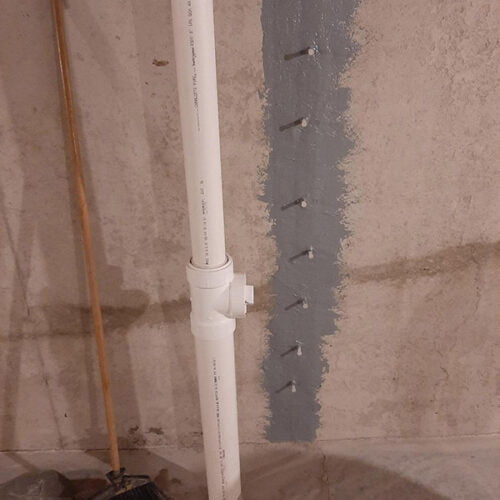
Epoxy Injection
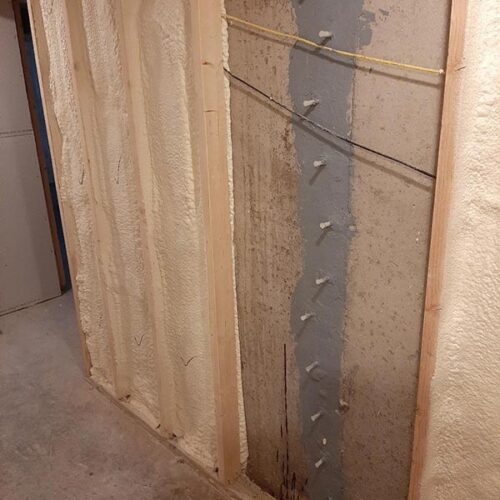
Epoxy Injection
FOUNDATION CRACKING
What Causes Concrete Walls To Crack
The most common way that a foundation wall cracks is due to natural shrinkage of the concrete when it is curing. Concrete curing is a chemical reaction, not just “drying” or loss of water. But depending on the concrete mix, amount of water, portland, aggregate type, temperatures, humidity, groundwater, sun exposure, groundwater, and other conditions, the amount of shrinkage that will occur in concrete as it cures varies.
In any case, this concrete shrinkage process causes the concrete to develop internal stresses. To relieve those stresses, unless control joints were included in the wall design, the wall is likely to crack in a classic “concrete shrinkage pattern” as the concrete cures.
Cracks in a poured concrete foundation which are diagonal or vertical and which are generally uniform in width, or which taper to an irregular hairline form and stop entirely, which are usually discontinuous in the crack’s finest or hairline area (the crack “stops and starts” in the same area), are usually shrinkage cracks. Shrinkage cracks in concrete range in length from a few inches to the entire height of the concrete wall, extending from wall top to bottom. Concrete shrinkage cracks virtually always extend through the full thickness of the foundation wall, which means they can provide a ready path for water entry into the building.
Common areas for a shrinkage concrete crack to develop are under a basement window, above a doorway in the middle of a long wall or where the foundation “steps down.” Shrinkage cracks also often occur near the middle of a large poured concrete wall.
A settlement crack is more likely to be wider at top than its bottom as the foundation “bends” over a single point (or as one section of footing tips downward from its neighbor), allowing differential settlement; it is possible for a settlement crack to appear fairly uniform however if a foundation breaks vertically and then pursues differential settlement. Settlement cracks need to be separated into initial settlement due to construction or site factors and ongoing settlement due to site factors. Settlement cracks are usually wider at the top of the crack, usually continuous, and may occur multiple times in a wall.